What is the History of Wind Power?
Wind power is a renewable energy resource, which means that unlike fossil fuels, it can never run out. Wind is a product of the sun heating the earth unevenly. When a warm patch of air meets a cool patch of air, it creates wind.
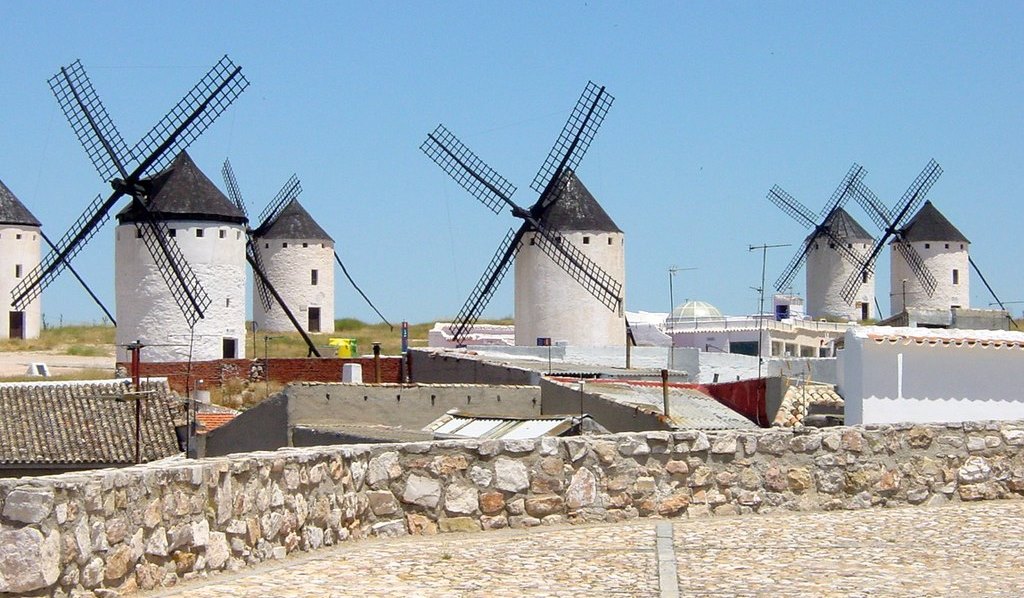
People have been harnessing the power of wind since the first sailboat. The exact date of this invention is unknown, but it is pictured by the ancient Egyptians around 3200 BCE. Wind power helped Persians pump water and grind grain between 500 and 900 B.C. As cultures harnessed the power that wind offered, the use of windmills spread from Persia to the surrounding areas in the Middle East, where windmills were used extensively in food production. Eventually, around 1,000 A.D., wind power technology spread north to European countries such as The Netherlands, which used windmills to help drain lakes and marshes.
The first electricity-generating windmill was built in Scotland in 1887 by Prof James Blyth. Throughout the 20th century, small wind plants, suitable for farms and residences, and larger utility-scale wind farms that could be connected to electricity grids were developed. During World War II, the largest wind turbine known in the 1940s, a 1.25-megawatt turbine that sat on a Vermont hilltop known as Grandpa's Knob, fed electric power to the local utility network.
The oil shortages of the 1970s created an interest in alternative energy sources. From 1974 through the mid-1980s, the U.S. government worked with industry to advance the technology and enable development and deployment of large commercial wind turbines. Large-scale research wind turbines were developed under a program overseen by NASA to create a utility-scale wind turbine industry in the United States. This research and development program pioneered many of the multi-megawatt turbine technologies now in use. Today, wind-powered generators operate in every size range, from small turbines for battery charging at isolated residences to large, near-gigawatt-size offshore wind farms.
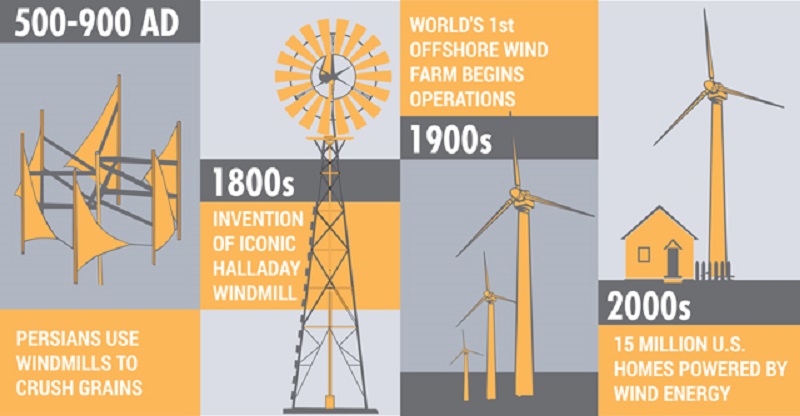
Pros and Cons
Wind energy is a renewable resource which we tend to think of as being better than non-renewable types of energy that use fossil fuels. However, like any other resources, hydro-electric power has both pros and cons.
Pros
Cons

People have been harnessing the power of wind since the first sailboat. The exact date of this invention is unknown, but it is pictured by the ancient Egyptians around 3200 BCE. Wind power helped Persians pump water and grind grain between 500 and 900 B.C. As cultures harnessed the power that wind offered, the use of windmills spread from Persia to the surrounding areas in the Middle East, where windmills were used extensively in food production. Eventually, around 1,000 A.D., wind power technology spread north to European countries such as The Netherlands, which used windmills to help drain lakes and marshes.
The first electricity-generating windmill was built in Scotland in 1887 by Prof James Blyth. Throughout the 20th century, small wind plants, suitable for farms and residences, and larger utility-scale wind farms that could be connected to electricity grids were developed. During World War II, the largest wind turbine known in the 1940s, a 1.25-megawatt turbine that sat on a Vermont hilltop known as Grandpa's Knob, fed electric power to the local utility network.
The oil shortages of the 1970s created an interest in alternative energy sources. From 1974 through the mid-1980s, the U.S. government worked with industry to advance the technology and enable development and deployment of large commercial wind turbines. Large-scale research wind turbines were developed under a program overseen by NASA to create a utility-scale wind turbine industry in the United States. This research and development program pioneered many of the multi-megawatt turbine technologies now in use. Today, wind-powered generators operate in every size range, from small turbines for battery charging at isolated residences to large, near-gigawatt-size offshore wind farms.

Pros and Cons
Wind energy is a renewable resource which we tend to think of as being better than non-renewable types of energy that use fossil fuels. However, like any other resources, hydro-electric power has both pros and cons.
Pros
- Wind energy is considered a clean fuel source because there are no emissions associated with energy production.
- It is a domestic fuel source and has the potential to provide more than 20 times the energy the entire human population needs.
- Wind energy is sustainable since wind is a product of the sun.
- Wind power is cost effective thanks to increases in demand, leading to advances in technology.
Cons
- Wind energy is intermittent, since wind is not constant, so it must be combined with other energy sources or stored.
- A certain amount of wind is required for turbines to be effective. This often means that wind turbines must be in remote locations.
- Manufacturing and installation require heavy equipment and a large initial investment.
- Wind turbines can be a threat to wildlife, and people who live near turbines complain about the noise and the aesthetics (the look) of the turbines.
Post a Comment:
You may also like:

Featured Articles
What is Wind Energy?
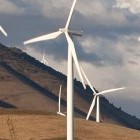 Wind is moving air. We can use the energy in wind to do work. Early Egyptians used the wind to sail ships on the Nile River. ...
Wind is moving air. We can use the energy in wind to do work. Early Egyptians used the wind to sail ships on the Nile River. ...
 Wind is moving air. We can use the energy in wind to do work. Early Egyptians used the wind to sail ships on the Nile River. ...
Wind is moving air. We can use the energy in wind to do work. Early Egyptians used the wind to sail ships on the Nile River. ...Wind Farm Siting, Installation and ...
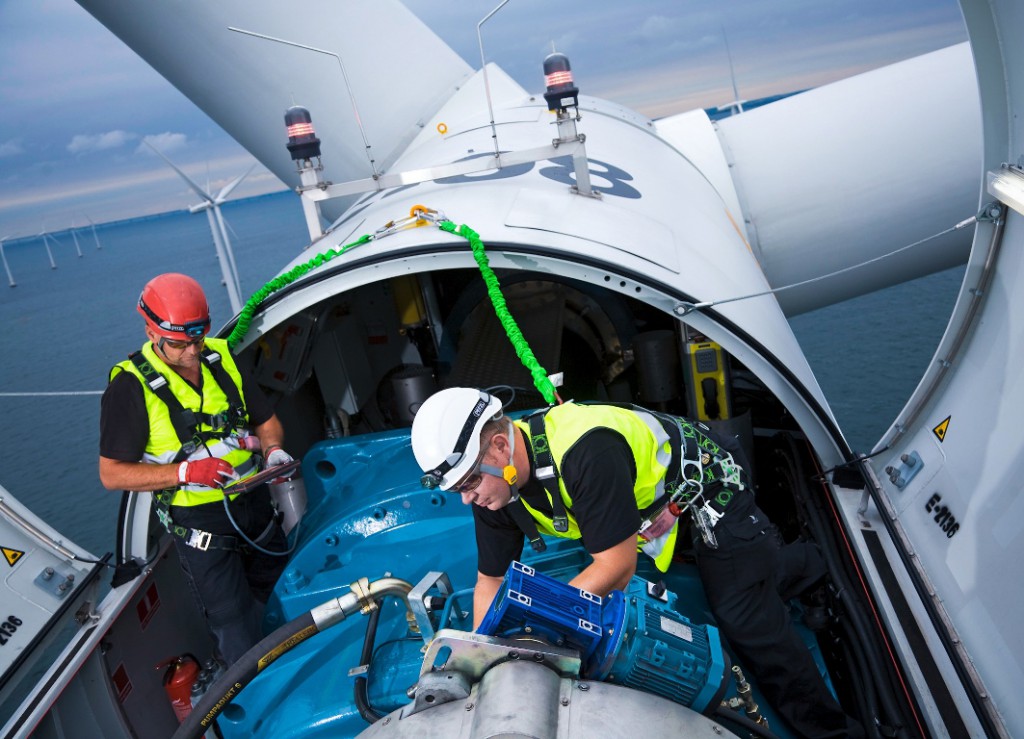 Before wind turbines can be installed, the most appropriate location or locations for them needs to be determined. The ...
Before wind turbines can be installed, the most appropriate location or locations for them needs to be determined. The ...
 Before wind turbines can be installed, the most appropriate location or locations for them needs to be determined. The ...
Before wind turbines can be installed, the most appropriate location or locations for them needs to be determined. The ...Basics of Wind Energy Production
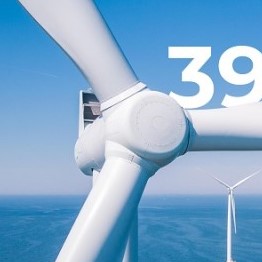 In the United States, most wind energy is commercially generated for delivery and sale on the grid. Wind projects vary in ...
In the United States, most wind energy is commercially generated for delivery and sale on the grid. Wind projects vary in ...
 In the United States, most wind energy is commercially generated for delivery and sale on the grid. Wind projects vary in ...
In the United States, most wind energy is commercially generated for delivery and sale on the grid. Wind projects vary in ...What is a Capacity Factor?
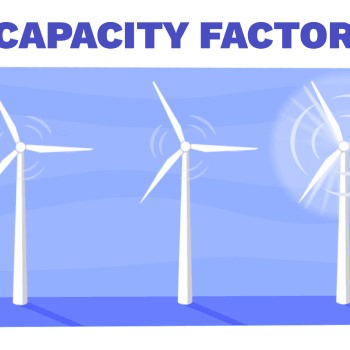 Wind turbines convert the kinetic energy in moving air into rotational energy, which in turn is converted to ...
Wind turbines convert the kinetic energy in moving air into rotational energy, which in turn is converted to ...
 Wind turbines convert the kinetic energy in moving air into rotational energy, which in turn is converted to ...
Wind turbines convert the kinetic energy in moving air into rotational energy, which in turn is converted to ...Basics of Wind Farms
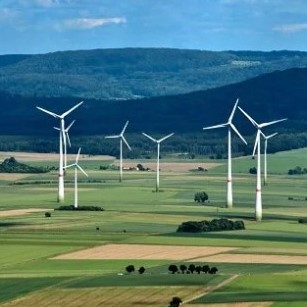 Throughout history, wind has been used to move grain mills or push the vessels that sailed the seas. However, it was not ...
Throughout history, wind has been used to move grain mills or push the vessels that sailed the seas. However, it was not ...
 Throughout history, wind has been used to move grain mills or push the vessels that sailed the seas. However, it was not ...
Throughout history, wind has been used to move grain mills or push the vessels that sailed the seas. However, it was not ...